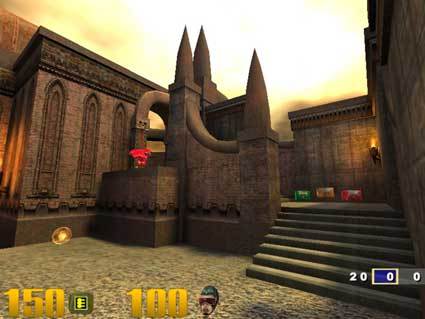Integrated VGA & How Good Is ATi's Radeon 9100 IGP?
The Many Faces Of 3D
In order to make 3D acceleration possible to begin with, developers of 3D software need a standard language in which the 3D output is programmed. Among other things, this standard, or API, determines which operations a graphics chip must support in order to be considered standard-conform. In this context, that means that all operations can be executed in the hardware.
The prevalent 3D-standards today are OpenGL and Microsoft's Direct3D (included in DirectX). Most PC games nowadays are based on Direct3D. When Microsoft releases a new version of DirectX, many of the new functions also tend to find their way into OpenGL - at least, as far as games are concerned. For the sake of simplicity, we will concentrate on Direct3D in the following descriptions.
Even the simplest graphics chips available today support the most basic 3D functions. Cards belonging to the DirectX 7 generation form the lowest rung on the ladder of 3D evolution. These chips basically follow the definition of the classical 3D accelerator, meaning that the 3D chip can execute certain pre-defined functions faster than the CPU would be able to. Most DirectX 7 3D chips also support hardware T&L (transformation & lighting), which relieves the CPU of the burden of geometry calculations. The most popular games and benchmarks of this generation include Unreal Tournament, Evolva, Giants, Quake 3 (OpenGL), and 3DMark2000. Even today, many games, such as Battlefield 1942, use 3D engines that belong to the DirectX 7 generation.
Screenshot: Quake3 Arena
Screenshot: Evolva
Screenshot: Giants
Get Tom's Hardware's best news and in-depth reviews, straight to your inbox.


